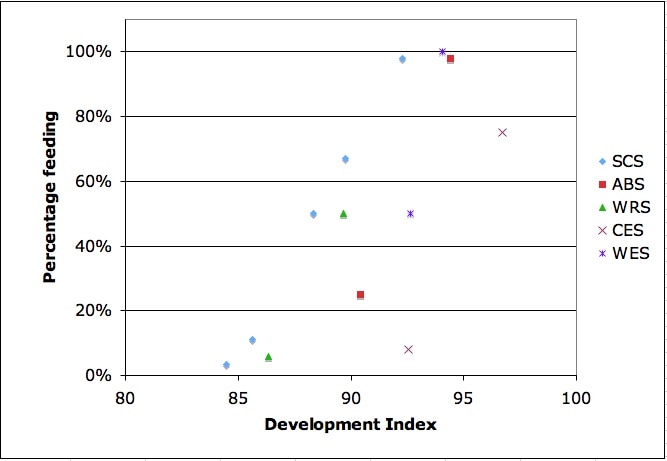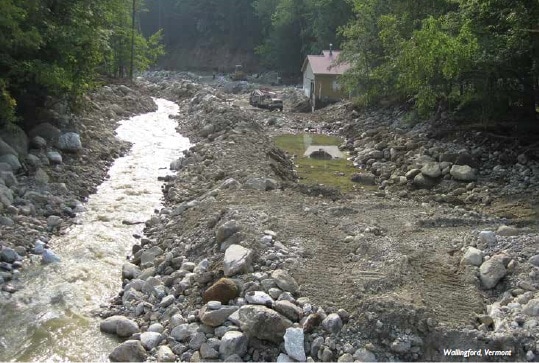|
FHGS fish die due to unplugged chiller On Friday, Amy Wright, of Fair Haven Grade School, sent me the tragic report that someone unplugged their chiller and, as a result, all her fish died. (A couple of days later they discovered two hardy survivors, so it wasn't a complete loss.) This is the second time a school lost almost all its fish because someone unplugged a chiller. It's also a good reminder to make sure you minimize the possibility that someone will make this awful mistake. Here are four suggestions:
We need more DI/Swim-up data! As you know, I've been hoping to get lots of data about what the DI was at swim-up time in tanks around the state. A number of you have e-mailed me information. The most helpful report I got so far came from Sabrina McDonough, of Shrewsbury Mountain School. Sabrina provided the following five data points. With Sabrina's input along with two data points each from Audrey Halpern, volunteer at the Albert Bridge School, and Zach Eastman, teacher at West Rutland School, I was able to assemble this graph of nine swim-up data elements. (Subsequently, Teri Hogan, of Clarendon Elementary School, and Pat Bowen, of Wallingford Elementary School, also each provided two data points, so I've now included those in the chart as well.) As you can see, at least for these five schools, there was a lot of swimming up going on well before alevin reached a DI of 100%. I would love to have more data to add to our little study. Getting additional input from you on when swim-up happened this year will help future TIC teachers know when to be particularly alert to evidence of beginning swim-up. LCBP-supported TIC schools This year nine schools were able to start TIC because of a $10,000 grant from the Lake Champlain Basin Program. So far I've gotten pictures from five of the schools. I've put them into this slideshow. Here's a list of the nine schools.
Why are some of my fry so FAT?! I got this from Tiffany Tucker, of Hartland Cooperative Nursery School, on March 3rd: We seem to have at least 1 or 2 of our little guys with giant swollen bellies? They seem to be semi ok, but a little slower and sometimes flipping upside down. Any suggestions to fix? Today is water change day, but all levels are in the ok range. Tiffany I put Tiffany's question out on the TIC/SIC listserve. Here's what I got back from Maryland/DC TIC coordinator Chuck Dinkel. It could be the swollen belly is the result of those having ingested one of their smaller tank-mates. Time to count fish. I'd collect the ones with swollen bellies and place then in a breeder basket for observation. Predation of larger more aggressive fish on the "runts" is not uncommon. And then Chuck Gregory, of Western New York TU, provided this along with some great photos. Sounds about right to me. Our hatchery managers here in NY have told me it’s a problem in the hatcheries, also, not just the TIC tanks. I’ve attached pix of 3 instances where the teachers sent me pix. The first one isn’t sharp, but notice how distended the belly is. The teacher actually pulled the smaller trout out of the bigger one and it was not a lot smaller than the one that ate it. Amazing documentation, wouldn't you say!! The aftermath of tropical storm Irene Five and a half years ago, much of Vermont was hit very hard by the remnants of tropical storm Irene. Living on slightly higher ground, my wife and I were not directly affected, but at Castleton University--a three-minute walk from my home--a once-tiny stream became a raging river and did over a $1,000,000 of damage to Glenbrook Gymnasium. As many of you undoubtedly experienced firsthand, hundreds of homes and thousands of properties were severely damaged if not destroyed. Last Fall, Trout Unlimited's quarterly magazine Trout, which I know some of you get, carried a terrific article about the flooding, the damage it inflicted, and the even greater damage done by well-intentioned but uninformed individuals who tried to help but didn't know how streams work. These folks pulled logs and rocks and root balls--all critical for trout habitat--from the rivers, removed important gravel, channelized streams, and built berms alongside them so that the river couldn't use its natural floodplain to dissipate energy. Many of the problems were due to under-sized culverts. New construction standards are trying to address this. Below is a picture taken in Wallingford, Vermont, that shows an example of channelization and berming. The irony is that a great deal of this stream work will actually make the impact of the next big storm worse. (Ask your students to try to find out why.) Thanks to the generosity of Trout Unlimited, I can give you access to the After the Flood article. The button below should link to it. The reading level is such that it won't be for appropriate for all students, but for those who can manage it, the story may be a great example of the kind of "complex texts" that the Common Core emphasizes. Plus it can help students learn important lessons about trout habitat, stream dynamics, etc.
It will also introduce students to some of Vermont Fish and Wildlife personnel as well as topics like hydrology, public policy, and disaster preparedness. And there's lots of interesting vocabulary words in the article too! Tell me what you think of it.
0 Comments
Leave a Reply. |
Joe Mark, Lead Facilitator, Vermont Trout in the Classroom
In June 2012, I retired after 40 years in higher education, having spent the last 32 years of my career as dean at Castleton. One of the first things I volunteered to do in retirement was to work with Jim Mirenda to help the Dorset School, where his kids and my Vermont grandkids attend, start a TIC program. Gradually that commitment grew into my current role, which is both demanding and highly rewarding. Archives
June 2017
Categories |





 RSS Feed
RSS Feed
